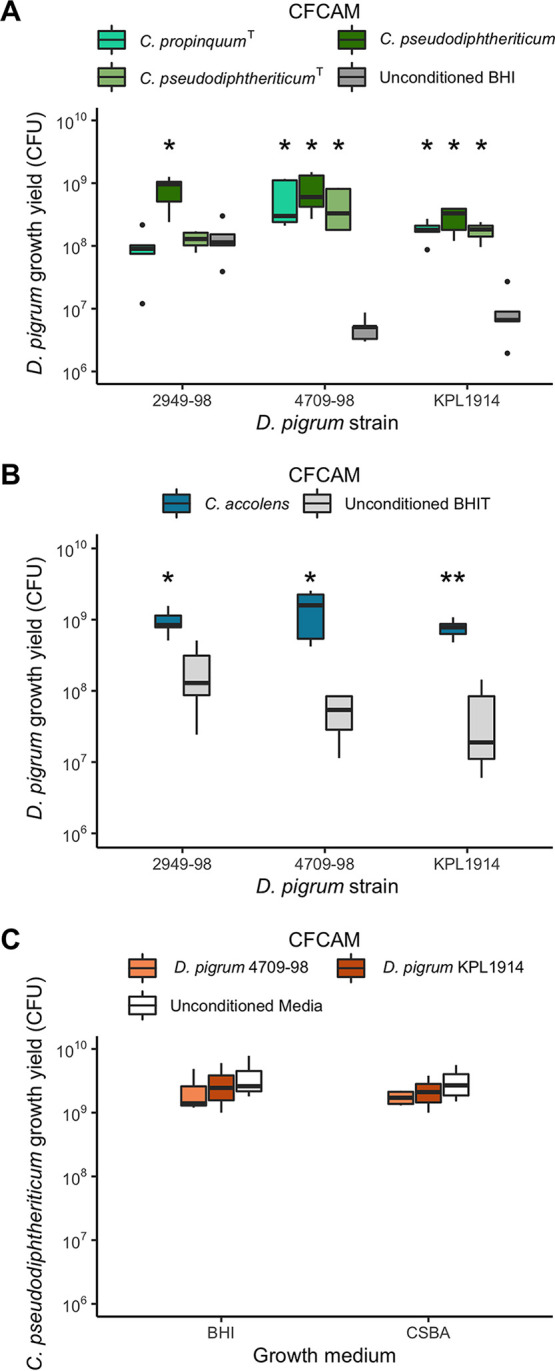FIG 2.

D. pigrum growth yields increase on cell-free conditioned agar medium (CFCAM) from nasal Corynebacterium species but not in reverse. (A and B) Growth yield of D. pigrum strains CDC2949-98, CDC4709-98, and KPL1914 was quantified as the number of CFU grown on a polycarbonate membrane placed on (A) cell-free conditioned BHI agar from C. propinquum (aqua green) or C. pseudodiphtheriticum (dark and light green) or (B) cell-free conditioned BHI-triolein (BHIT) agar from C. accolens (blue) and compared to growth on unconditioned BHI agar (dark gray) or unconditioned BHIT agar (light gray), respectively. (C) Growth yield of C. pseudodiphtheriticum KPL1989 on CFCAM from D. pigrum strains (orange) compared to unconditioned medium (white) was assessed similarly. BHIT was used for growth of C. accolens since it is a fatty acid auxotroph and releases needed oleic acid from triolein. Preconditioning strains were grown on a 0.2-μm-pore-size, 47-mm-diameter polycarbonate membrane for 2 days to generate CFCAM. After removal, we then placed a new membrane on the CFCAM onto which we spread 100 μl of target bacterial cells that had been resuspended to an OD600 of 0.50 in 1× PBS. After 2 days of growth, CFU were enumerated as described in Materials and Methods. CFU counts were compared independently for each individual strain (A and B, n = 5) or medium (C, n = 4) using a Wilcoxon rank sum test with Bonferroni correction for multiple comparisons to the unconditioned medium. Dark bars represent medians, lower and upper hinges correspond to the first and third quartiles, and outlier points are displayed individually. *, P ≤ 0.05; **, P ≤ 0.001. CSBA, citrated sheep blood agar.
